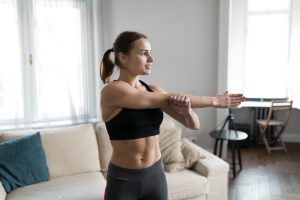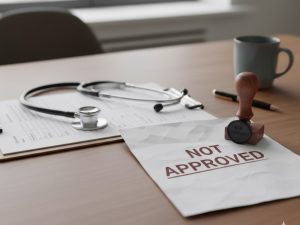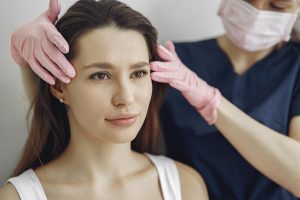People searching for less invasive ways to tighten skin often come across Renuvion J-Plasma.
The procedure shows up frequently in before-and-after videos and sparks interest for treating areas like the abdomen, arms, and under the chin with a recovery time considered short. But not everyone falls under the recommended profile.
During consultation, one common question tends to come up: who fits the profile for undergoing Renuvion J-Plasma? Medical history, degree of skin laxity, and weight stability usually influence the doctor’s decision.
This article gathers the most common characteristics considered in the U.S. when identifying someone as a good candidate for Renuvion J-Plasma.
What is Renuvion J-Plasma and how does it work?
Renuvion J-Plasma tends to be chosen by people looking for skin tightening without large incisions.
The device combines radiofrequency energy with helium gas to target the layers just beneath the skin. This combination creates a controlled thermal effect that often leads to tissue contraction and collagen response.
The most commonly treated areas include the abdomen, arms, neck, back, and inner thighs. The procedure usually takes place in a clinic or outpatient surgical center, using local anesthesia or light sedation.
A thin cannula gets inserted under the skin. The energy targets specific points while following the body’s contour. Temperature control helps reduce the risk of injury to surrounding tissue.
For this reason, Renuvion often enters the conversation as an option for people who seek skin firmness without traditional surgery.
Who is a good candidate for Renuvion J-Plasma?
The most common profile includes patients with stable weight and no excess skin requiring traditional surgery. Individuals without active skin conditions, local infections, or a history of abnormal scarring tend to fit better within clinical recommendations.
Some factors commonly evaluated by surgeons include:
- Localized laxity affecting body contour definition.
- Weight stability for at least six months.
- Body mass index not classified as obese.
- Overall health status without uncontrolled heart or lung conditions.
- Realistic expectations regarding outcomes.
Each case usually requires individual assessment. The term good candidate for Renuvion J-Plasma applies when physical signs and medical history align with safe procedural indication.
Comparison of candidates for Renuvion vs. traditional surgery
| Characteristic | Renuvion J-Plasma Candidate | Traditional Surgery Candidate |
| Degree of skin laxity | Mild to moderate | Moderate to severe |
| BMI (Body Mass Index) | Healthy to slightly elevated | Often higher or with excess skin |
| Common age range | 30 to 55 years old | Typically 45 years and up |
| Patient goal | Improve contour with shorter downtime | Remove excess skin with more defined results |
| Estimated recovery time | 7 to 10 days | 2 to 3 weeks |
| Type of anesthesia | Local with mild sedation | General |
| Scar | Small and concealed | Visible, depending on the technique |
| Indicated after weight loss | After 6 months of stable weight | When loose skin remains |
| Most commonly treated area | Abdomen, arms, under chin, neck | Abdomen, face, thighs |
Is there a BMI range for a good candidate for Renuvion J-Plasma?
Body mass index often influences the recommendation for this procedure.
A good candidate for Renuvion J-Plasma typically maintains a BMI within the healthy or slightly elevated range, usually below 30.
Clinics usually assess BMI with the following guidelines:
- BMI between 18.5 and 24.9 tends to show better visible outcomes.
- BMI between 25 and 29.9 may be considered when laxity is the main concern and localized fat is minimal.
- BMI over 30 often leads to recommendations for liposuction, surgical lifting, or a weight management program before considering Renuvion.
Stable weight for at least six months tends to be part of the evaluation criteria.
Can Renuvion J-Plasma be combined with other procedures?
Renuvion J-Plasma is often integrated into broader treatment plans for body or facial contouring. A good candidate for Renuvion J-Plasma may receive this option when multiple aesthetic concerns go beyond skin tightening alone.
The most common combined procedures include:
- Liposuction: Renuvion is typically applied immediately after fat removal to promote skin tightening in the same area.
- Mini tummy tuck: For patients with mild lower abdominal skin excess, this combination may improve skin appearance without large incisions.
- Facetite or partial neck lift: In areas like the neck and under the chin, combined use is often suggested when laxity affects multiple tissue layers.
These combinations usually require personalized surgical planning and preoperative tests. Indication depends on treatment area size, available recovery time, and overall health status.
Surgeons usually evaluate:
- Overlapping zones of localized fat and lax skin.
- Healing capacity and anesthesia tolerance.
- Compatibility between recovery periods for each procedure.
Combinations tend to be recommended when a single method cannot address the patient’s main concern.
Schedule your consultation with Renuvion J-Plasma specialists in Miami
Patients seeking a personalized evaluation for Renuvion J-Plasma find in Smart Plastic Surgery a team prepared to guide the best approach.
Our clinic, located in Miami, serves individuals who want to address skin laxity through a less invasive method, with medical safety and professional support.
During the consultation, our specialists review your medical history, examine the target areas, and explain whether you may be a good candidate for Renuvion J-Plasma.
You can also explore the possibility of combining treatments and create a plan based on your goals.
Wondering if Renuvion is right for you?



